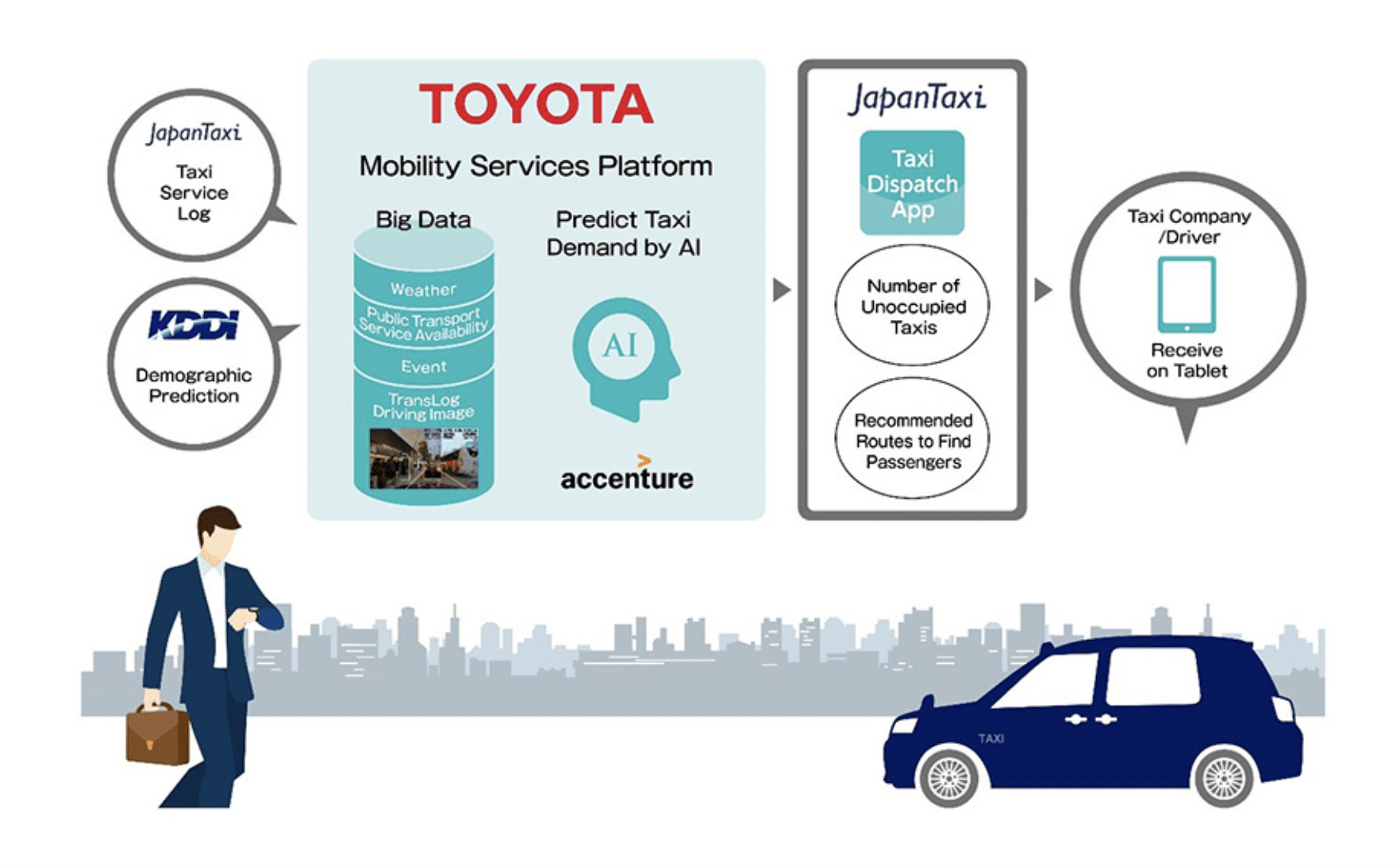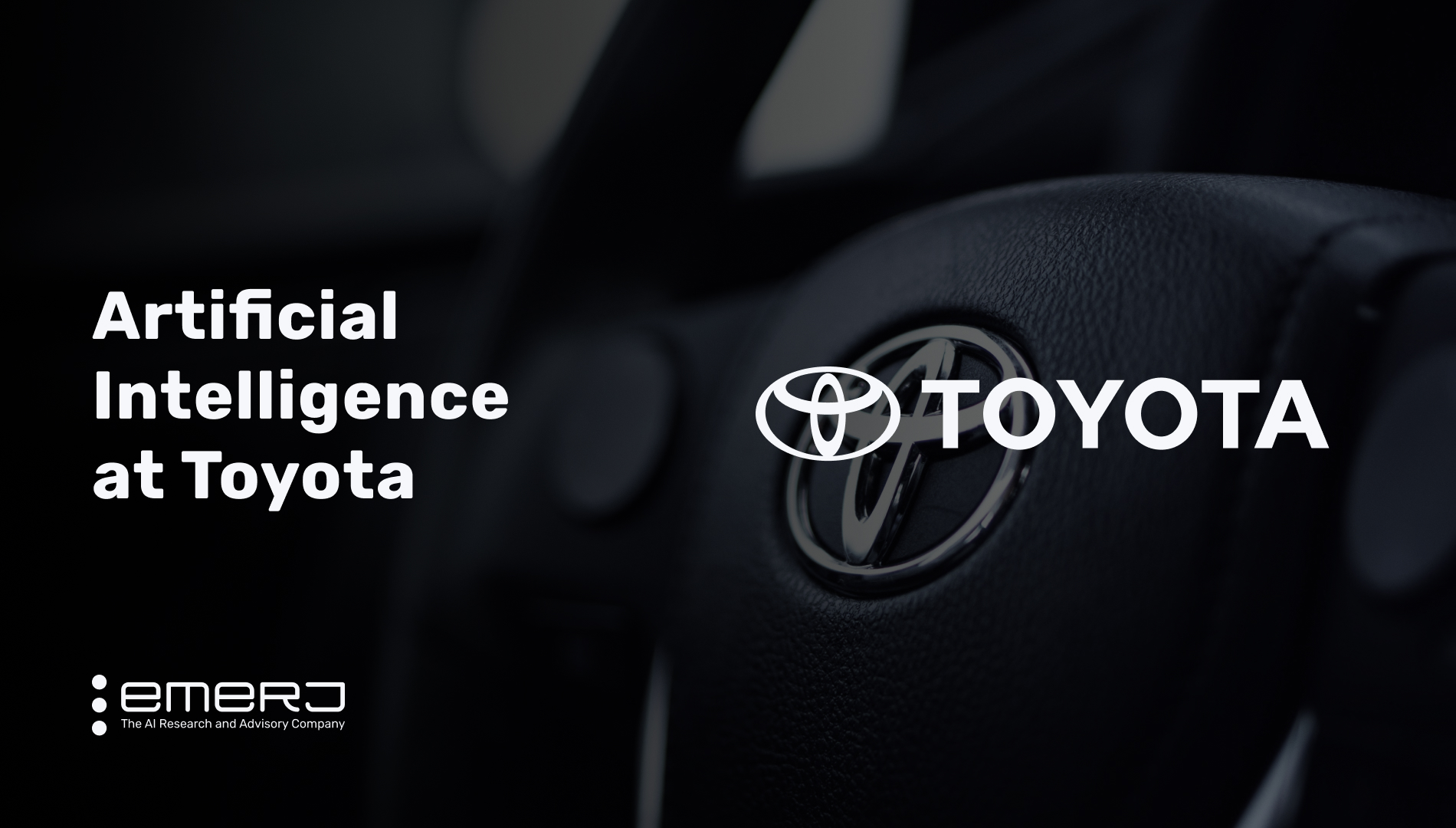Toyota came to the United States in the late 1950s, setting up its US headquarters in California. A decade later, the Japanese automaker became the third-largest import brand in the United States. In 1968, Toyota introduced the Corolla, now the world’s best-selling passenger car. Today, Toyota is rebranding itself as a mobility company.
As of 2021, Toyota trades on the NYSE with a market cap that exceeds $250 billion. For the fiscal year ended March 31, 2021, Toyota reported net revenues of 27.2 trillion yen, or approximately US $256.7 billion.
Toyota established the Toyota Research Institute, (TRI), a wholly-owned subsidiary, in 2015 to “develop active vehicle safety and automated driving technologies, robotics, and other human amplification technology.” Its research areas include:
- Automated Driving
- Robotics
- Accelerated Materials Design and Discovery
- Machine-Assisted Cognition
In this article, we’ll look at how Toyota has explored AI applications for its business and industry through two unique use-cases:
- Predictive-Demand Taxi Dispatch Service — Toyota joined with three other companies to use artificial intelligence and machine learning to predict demand for taxi service while considering inputs such as smartphone data, event information, weather conditions, and the availability of public transportation.
- Teammate — Toyota has made significant investments in the research and development of autonomous, and automated, vehicles that use AI, machine learning, and computer vision to transform the driving experience.
We will begin by examining how Toyota joined with JapanTaxi, KDDI Corporation, and Accenture to apply machine learning and artificial intelligence technology to the task of predicting the demand for taxi dispatch services and develop a “system [that] can contribute to transforming the taxi industry,” the coalition of companies claims.
Predictive-Demand Taxi Dispatch Service
Optimizing a taxi dispatch system requires experience in a local market and expertise on how different events and other factors influence demand. Traditionally, taxi dispatch services have required communication via two-way radio or phones between dispatchers and drivers regarding traffic, weather, and event-related conditions.
Often, taxi dispatchers were once drivers themselves and rely on intuition and, sometimes, luck, when instructing taxi drivers on where to position their vehicles to address demand as it develops.
Toyota joined together with JapanTaxi, KDDI Corporation, and Accenture to bring AI to the taxi dispatch process, starting on a trial basis in Metropolitan Tokyo. Together, the coalition aimed to create a model that would advise taxi drivers where to go so they could better meet the supply and demand of their markets, and, ultimately, find fares and increase their personal revenues. Each of the companies had a defined role in developing the predictive-demand taxi dispatch service model:
- JapanTaxi developed the taxi demand prediction app and collected taxi-related data that would inform the model’s algorithms
- KDDI brought location-based big data from smartphones and developed demographic prediction technology that modeled people’s movements
- Accenture created the analytics algorithm of the engine to predict taxi demand
- Toyota developed its Mobility Services Platform (MSPF) to evaluate big data from smartphones and taxi- and event-level data to produce taxi demand prediction data.
Below, a graphic from a Toyota news release shows how the alliance worked in greater detail:

The team envisioned a model that would optimize the efficiency and revenue production of taxis and their drivers, while also minimizing waits for passengers.
To obtain the data needed to support the predictions that would fuel the taxi dispatch support system, the project team sourced:
- Location-based data from smartphones
- Event information for the localities under review
- Data related to weather conditions
- Public transportation availability
According to the project team, they then used an AI-based system with machine learning models to predict the likely demand for taxi services within a locality and the number of taxis within a 500-meter area in, initially, Tokyo.
A tablet mounted within the taxi delivers the predictions, which shows maps that indicate where taxis are needed and where they are currently located. This, the project team claims, enables drivers to move their taxis and react to the supply and demand of the area. The idea behind the model, the team says, is that taxis will serve areas with more demand and thus reduce wait times and increase their occupancy rates.
The taxi dispatch support service went live in 2018 on a trial basis in the Tokyo area. During its test run, Toyota claims that the system posted high accuracy rates of 94.1%. Drivers using the system reported sales growth averaging 20.4%, while drivers who did not take part in the trial realized a 9.4% increase during the same period, according to Toyota.
The results encouraged the project team and they planned to expand the Predictive-Demand Taxi Dispatch Service system to wider use outside Tokyo. The companies announced plans to explore the model’s use as a training tool and a vehicle to improve the taxi transportation experience for consumers outside Tokyo.
Today, Toyota bills its Mobility Services Platform (MSPF) as an “open system” that uses vehicular big data obtained through Toyota’s connected vehicles to support:
- ride-sharing companies
- car-sharing companies
- insurers
Toyota reports that future plans for MSPF include supporting the automaker’s mobility objectives when Toyota forms partnerships with “diverse service companies” to support car- and ride-sharing, telematics insurance, and its e-Palette technologies.
Teammate
People want self-driving cars that drive like calmer, more level-headed versions of themselves, according to research from Florida Atlantic University’s College of Engineering and Computer Science, published in HCI in Mobility, Transport, and Automotive Systems. Indeed, the global autonomous vehicle market, estimated at approximately $55 billion in 2019, is expected to surpass $550 billion by 2026.
Toyota, rebranding itself as a mobility company, wants to claim its place in that growth. Earlier this year, Toyota’s first advanced Level 2 automated driving system, called Teammate (or T-Mate in Europe), came to the US in some 2022-model year Lexus LS500h models, following the debut of similarly equipped vehicles in Japan earlier in 2021.
Here, Toyota’s Chief Technology Officer offers more detail about Toyota’s advanced-driver assistance support system:
For now, Toyota’s iteration of automated driving—at the second-lowest level of SAE International’s five-level scale—offers Advanced Drive and Advanced Park, both of which still require driver awareness and, occasionally, intervention.
“[With] the Advanced Drive feature,” Nick Sitarski, Toyota’s Vice President & Group Manager, Integrated Vehicle Systems, explains in a Teammate Advanced Drive Background video, “we have a system that can navigate down the freeway hands-off, eyes-on-the-road, under certain conditions.”
While Toyota’s research into automated driving has produced higher-level autonomous vehicles, Toyota has made it clear that this generation of vehicle automation is not fully autonomous or self-driving.
To build the Teammate technology, Toyota relies on artificial intelligence, computer vision, and deep machine learning, integrating the following technologies:
- Deep learning functions that enable the automobile to adapt to different travel scenarios, supported by four main ECUs, (electronic control units)
- 360-degree sensing provided by complete-circumference cameras and ultrasonic sensors
- A navigation system integrated with HD maps that supports the Advanced Drive’s abilities to localize the vehicle on the map and navigate the route to a specific destination, down to the lane choices that reflect real-time decisions facilitated by the driver
- An Emergency Driving Stop System (EDSS) that detects whether the driver is alert and monitoring the vehicle’s environment. The EDSS is empowered to stop the vehicle if needed
- A People-Centric Driving Assist function that monitors and maintains proper spacing between the vehicle and others on the roadway
“Our mobility Teammate concept is really trying to make the vehicle and driver act as one,” explains Sitarski, “with a seamless handoff between the driver control and the vehicle control.” With Teammate, Toyota brings its research into autonomous driving to the real-world driving experience.
In this section of its video briefing on its Advanced Driving Support system, Toyota provides hands-on demonstrations of its Advanced Drive and Advanced Park technologies, key components of Teammate.
Although Teammate-equipped vehicles just hit markets in 2021 and our research was unable to locate detailed financial results for Toyota’s AI efforts, the automaker appears bullish on strategizing its next strides into AI-enhanced driving.
Toyota established Woven Planet in January 2021, to explore the future of AI and mobility. Since then, Woven Planet has gone on to build its arsenal of AI solutions and experience by acquiring:














